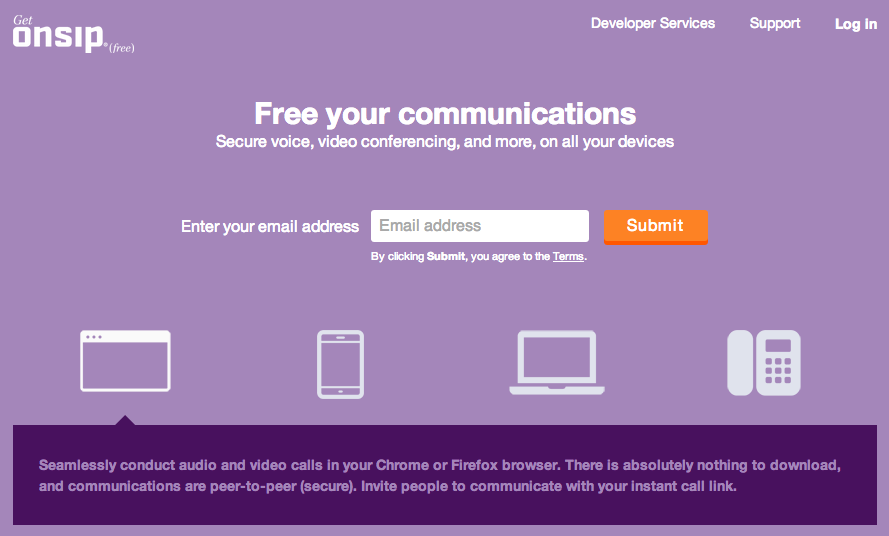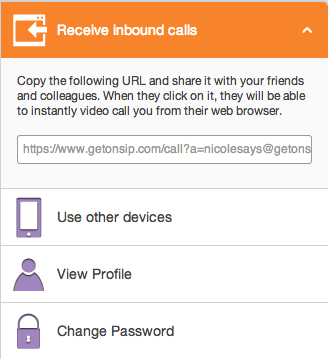As we've blogged about many times, WebRTC, an open project that enables web browsers with Real-Time Communications (RTC) capabilities, has the potential to change the way we communicate. This potential is recognized in the growing number of WebRTC events and media buzz, but WebRTC application development is only beginning to catch fire across industries. Today, OnSIP is happy to announce a significant milestone in product development with WebRTC: The relaunch of www.getonsip.com.
It's time to free your communications. Free of charge, GetOnSIP combines SIP and WebRTC to deliver instant, secure, browser-based video calling. We are glad to deliver to the world such a convenient and quality means to communicate, but we're especially happy with what's going on underneath the hood.
"It's simple enough to do WebRTC to WebRTC video chat," said OnSIP Software Engineer Eric Green. "But when you have a myriad of possible SIP phones that GetOnSIP can encounter, the potential problems multiply. Part of our process involved testing every single SIP phone known to man to get the quirks of each phone worked into our framework."
To date, GetOnSIP is the most stable and interoperable implementation of WebRTC and SIP. The OnSIP team has extended our platform to support SIP over WebSockets, allowing developers to utilize JavaScript SIP clients like JsSIP and sipML5 to build phones in a browser and register them with OnSIP (See more information in our developer resources). OnSIP currently supports voice and video calls between WebRTC supported browsers, as well as voice calling between standard SIP phones and WebRTC supported browsers; video calling is supported between some SIP software phones that utilize video codec VP8. For the most up-to-date information, visit our live interoperability chart.
"Most solutions I've seen treat WebRTC as its own bubble that must be 'controlled' or 'broken' to interoperate with an existing platform," says OnSIP Lead Developer Will Mitchell. "We natively integrated WebRTC into OnSIP, which meant a ton of rebuilding every step of the way."

This decision to natively integrate WebRTC into OnSIP came with many engineering challenges, not the least of which was deciding what JavaScript SIP library to utilize. The library had to be highly customizable to offer our engineers the flexibility they needed to pull off an ambitious project like GetOnSIP.
"SIPml5 and JsSIP were the real contenders," says Will. "Neither had all of the functionality we needed, so we chose the more hackable JsSIP."
Our team was wading in uncharted waters simply by deciding to treat WebRTC as a component that could be fully interoperated into our platform. There were no established industry guideposts or benchmarks for our engineers to gauge progress, and all stages of the process had to be meticulously tested and crafted by our own standards.

"GetOnSIP is an example of what developers can produce by combining WebRTC - a free, open project that enables web browsers with Real-Time Communications (RTC) capabilities via simple Javascript APIs - with OnSIP's hosted SIP services," says OnSIP CTO John Riordan. "Developers can now add the features and functionality demonstrated by GetOnSIP to any web page."
The latest versions of Firefox and Chrome support GetOnSIP.
Related Links:

